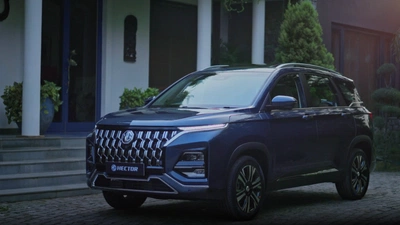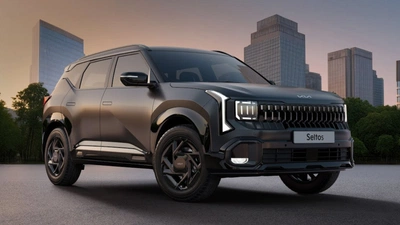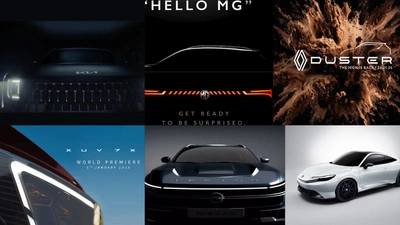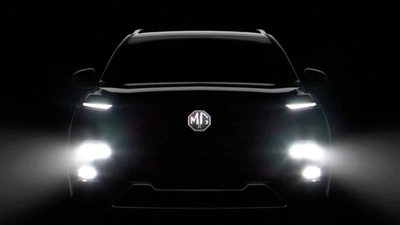Ownership Review Of My New Pearl Black Virtus GT Plus DSG
It’s been 10 months since I bought my new Virtus GT Plus DSG. I must say its had its fair share of twists and turns in this long tenure. Check out the detailed review of my 2023 Virtus GT below.
Published November 26, 2024
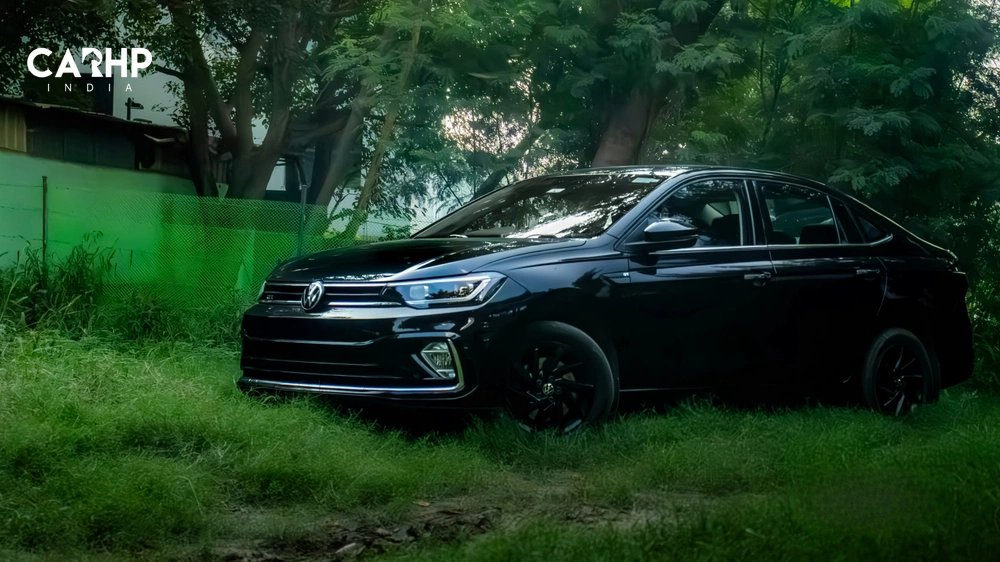
Black cars have always been a dreamer’s delight for most car guys. My dream of owning a black sedan started brewing ever since I laid my eyes on the black 2006 Honda Accord that my principal used to drive back in my school days. Fast forward 15 years, I stepped into the automotive market to buy my first car. And what better than a black sedan? Enter the 2023 Virtus GT Plus DSG EDGE edition. I got it in Pearl Black colour, obviously, and got the delivery on 19th November 2023.
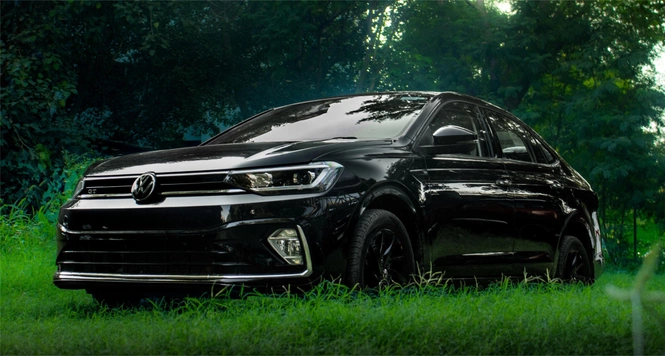
Let me break down the lengthy name for you. GT Plus means it’s a fully equipped trim based on the Topline variant of the same car, just with a 1.5L engine. DSG means it's an automatic transmission and the EDGE edition only means I chose one of their two special colours - the Pearl Black (or Carbon Steel Grey).
ENGINE & PERFORMANCE
Pros:
- Relaxed nature of the engine
- Gearbox is butter smooth at high speeds
- Active Cylinder Deactivation does make a difference
- Good high-speed stamina
Cons:
- Gearbox can get clunky at low speeds in D mode
- Linear power delivery
- If not for the DSG, turbo lag is pretty evident
- The Engine -
I had to choose among one of the two available options, the 1.0L TSi motor that made 118 bhp and 175Nm of torque or the 1.5 TSi motor. I looked back at my 11 years of patience waiting for a new car, pulled my chin up, and went with the latter. Although I test-drove both of the engine options, I fell in love once I slammed the accelerator on the 1.5 engine.
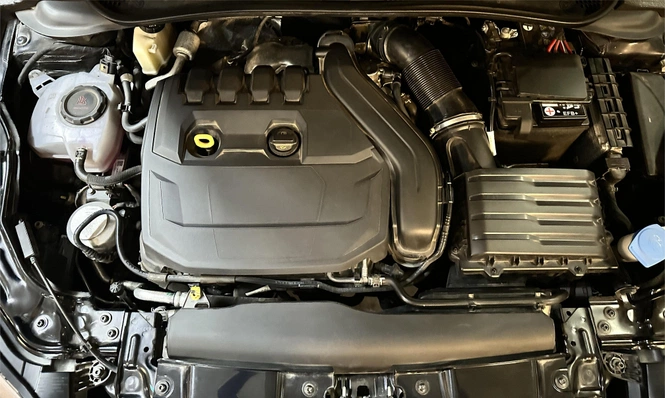
My 2023 Virtus GT Plus is equipped with a 1.5L EVO I (EA211), inline 4, turbocharged (TSi) motor that makes 148 bhp and 250 Nm of torque. Transmission duties are discharged by a 7-speed dry clutch DSG, also infamously known as the DQ200. For those who don’t know, it’s a dual-clutch transmission that sends power to the front wheels.
- My experience with the engine
The 1.5 TSi motor feels punchy in initial impressions, however, spend some time in the traffic and you’ll observe its prominent turbo lag below 1700 RPM. Once you get past that mark, yes, the 1.5 TSi flies! The turbocharger is placed right behind the engine, so you keep hearing that typical turbo whine in mid-range of the RPM band.

The DSG does well to manage the enormous turbo lag this engine has. But, if you got yourself a manual, you’ll have to skip a gear or two before you expect the Virtus GT to lunge ahead. However, once the turbo spools up, there is an unmistakable push-back in the seat, and it is addictive.
- It’s not all Turbo lag
Once I got the hang of the Turbo lag, I started decoding why this turbo lag occurs so badly when the transmission is in D mode—especially knowing well that even the VW Vento Tdi engines had lesser turbo lag on flat-footing the accelerator. On closer inspection, I figured that this lag is not just because of the turbo, but because of Active Cylinder Technology (ACT) too.
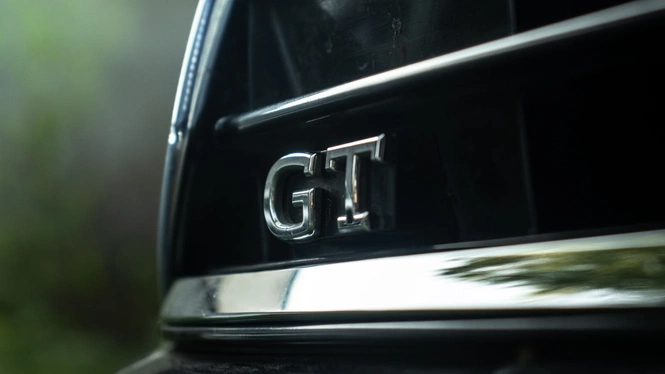
In such cases where the ACT is active, if you slam the accelerator, there’s a second-long delay before the engine starts revving freely and only then the gearbox responds accordingly. Since the ACT only works in D mode, the S mode seems to reduce the turbo lag significantly.
- Active Cylinder Technology (ACT)
This feature is exclusive to the 1.5 TSi motor only, wherein, the ECU is programmed to shut off 2 cylinders to save fuel. When the ECU detects that your vehicle is moving at a constant speed, it cuts the fuel supply to two cylinders out of the 4. In turn, this ensures good fuel economy numbers.
The ACT, however, needs specific conditions to kick in. First, it works only at speeds below 110 kmph. Second, the road has to be levelled. It might fail to kick in during incline or decline conditions. The Driver’s display shows an “eco” symbol at the bottom right to indicate whether the ACT is active or not. I have to highlight that, the transition between the activation and deactivation of the ACT is completely seamless.
- The Transmission and Paddle Shifters
The DQ200 is one of the quickest-shifting automatic gearboxes in the segment that I have ever experienced. The shifts are precise and unlike typical Torque converters and CVTs, the gearbox doesn’t over-rev here. While precision is one thing, each shift is also butter smooth when driven sedately. My father couldn’t make out when the car shifted gears when I took him out for a drive.
Slam the accelerator in D or “Drive” mode and the Virtus’s DSG takes a couple of seconds before it goes all Rambo on the gearbox. This interval shortens considerably in the S or “Sports” mode. The good part is that it knows exactly the right gear to be in. The power surge, then ahead, might just feel a bit unsettlingly quick for some. The paddle shifters are good, but the DSG doesn’t let you hold the gears for a longer duration. In the M or “Manual” mode, it does give a little better control, but as soon as you hit the rev limiter, it’ll shift up automatically.
It’s not all colourful though, there are some greys hidden in the DQ200 too. Like in bumper-to-bumper traffic, the DSG sometimes gets confused between the first and the second gear at times. It gets jerky and a small ‘clunk’ can be heard during such encounters. However, the hill hold feature works so well during inclines or declines that I never had to worry about my car rolling away.
- Suspension and Handling
My Virtus GT comes equipped with some enhancements that help manage the car’s increased ground clearance and wheelbase. These enhancements include features like brake actuated LSD, ABD, ESP, ABS, and bigger brakes as compared to the lower trims. To tackle the rough roads, it comes equipped with MacPherson Struts in the front and a torsion beam setup at the rear.
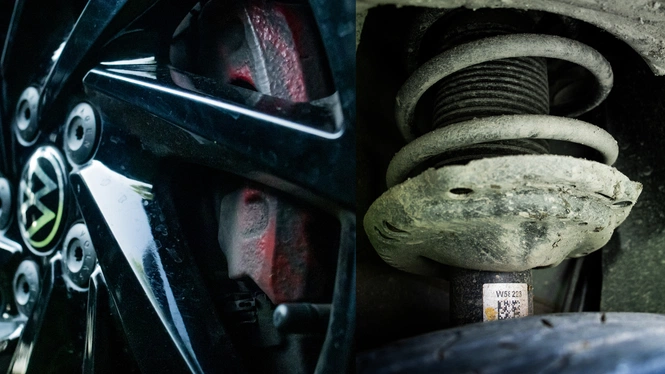
The suspension is on the stiffer side at low speeds. You get to bear the brunt of each pothole you encounter. However, at highway speeds, it gets rewarding. The GT stays planted and gobbles up potholes smoothly. The electric steering is too light for my liking, but it starts weighing up at considerable speeds.
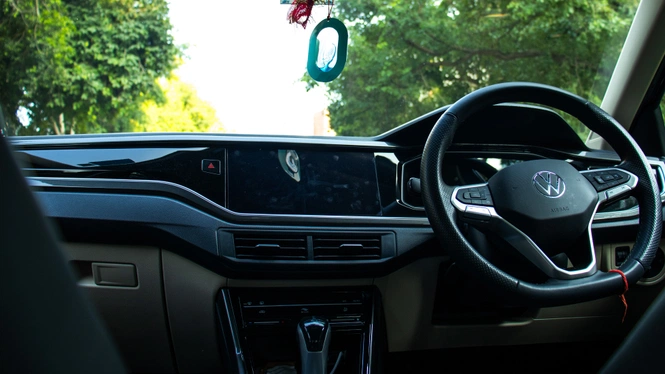
Coming from a VW Polo that my father has owned for over 11 years now, I have to admit that there is considerable body roll in the Virtus GT compared to my Polo. Thankfully though, it is still one of the best handlers in the segment and still has enough grip to tackle the steepest of curves. The body roll only makes it unsettling for the occupants of the car, not the car itself.
- 0-100 kmph and top speed
Although I did not measure the timings with any official gear, but based on what I have observed, my Virtus GT can do the 0-100 kmph run in 8.8 seconds from a standstill. The redline stands at 6200 RPM and the 100 kmph comes up in just 3rd gear!
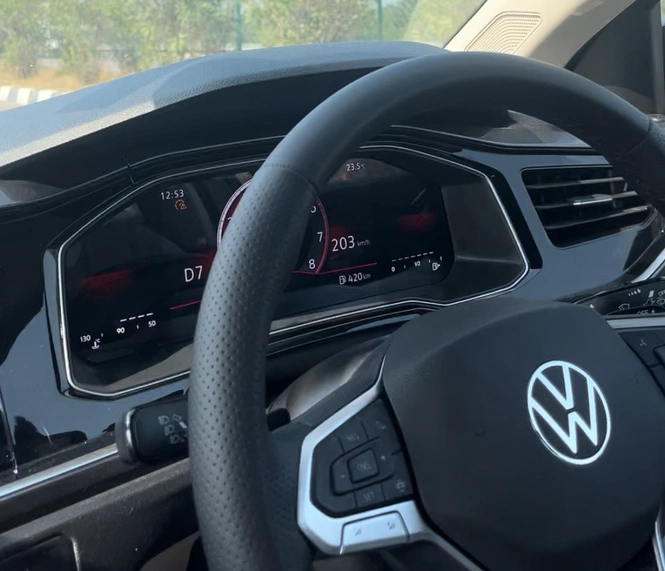
I also had the opportunity to check the top speed of the car. It maxes out at 203 kmph where it is electronically locked. The Virtus GT achieves this top speed in the 5th gear itself (with 2 more gears to spare). Once it hits the 203 kmph mark, it shifts both of the gears quickly. As a result, you’ll find yourself sitting at the top speed at just 3800 RPM.
- Fuel Economy
My habit of slamming the accelerator certainly costs me a lot. As expected, my opinions on the Fuel economy of the car might differ from the rest of the owners. On good days, when I drive within city speed limits with minimal traffic, My Virtus GT has managed to churn out 20 Kmpl too. But this number gets down to 6-7 kmpl when driven spiritedly.
On my highway trip from Chandigarh to Lucknow, I maintained speeds of about 120-130 Kmph and churned out 14 kmpl in the total trip of 800 km. Bear in mind that my car had 5 occupants and the boot was loaded up to the brim.
INTERIOR
Pros:
- Good-quality plastics used
- Driver and co-driver electronically adjustable seats
- Cooled glovebox
- Wireless Apple Carplay and Android Auto
- Lag-free infotainment system
- 8.1 Audio system
Cons:
- Rattling noise gets prominent at times
- Shiny interior trims are scratch-prone
- Some plastic bits are poorly built and might fall off
- Rear seat inclination angle
- One-touch up-down function not available on all windows
- Noisy ventilation seats
- The Dashboard -
The Virtus GT’s dashboard can attract polarising opinions, but I like it! The dashboard looks well-finished and offers a premium outlook. I haven’t been a fan of the pop-out infotainment screens like in the Skoda Slavia. Thankfully, the 9-inch infotainment screen in the Virtus GT is well-integrated inside the dashboard.
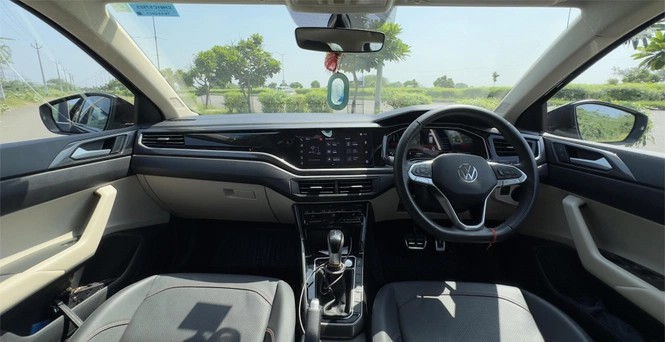
The flat-bottom steering wheel is wrapped in leatherette with porous grips and offers a rich feel. The buttons on it though do feel a little bit clumsy. The accelerator and brake pedals are finished in aluminium and feel solid. There is ambient lighting in the footwell area as well, further increasing the oomph factor of the car.
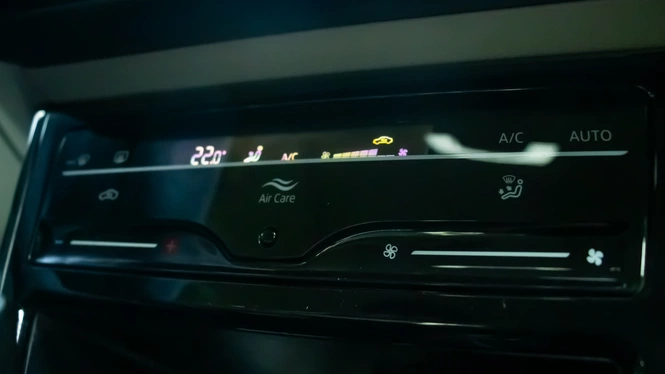
I don’t prefer the touch-based AC controls offered in my Virtus GT. I have owned this car for 10 months now, yet I still have to take my eyes off the road to adjust its settings. Here’s a suggestion to Volkswagen India - at least add haptic feedback to those touch-based AC controls to reaffirm the selections.
- The Seating Comfort -
My Virtus GT Plus comes equipped with leatherette seats. There’s no special mention of GT in the interior (although I would have loved to see one) but they do offer red stitching as a consolation. Both the front seats offer electric adjustment and ventilation features. The ventilation can be set to two different speeds. When it is set to the maximum speed, it gets really noisy. There’s a whining noise that overpowers the otherwise rather quiet cabin and you’ll have to play some music to mask that irritating whine.
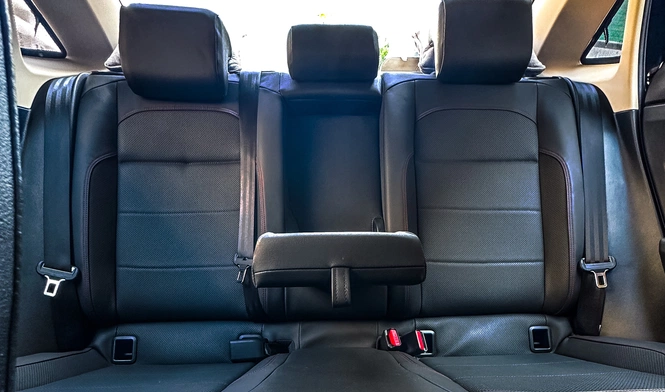
The rear seats offer loads of legroom and headroom, but the shoulder room can only be called decent at the most. The reclination angle of the rear bench is also a little upright for my liking. Make no mistake, the 2023 Virtus GT is a 4-seater sedan strictly. The fifth person at the rear can only be a kid at most. However, for short drives, three adults can adjust easily.
- The Infotainment And Drivers Display -
The 10-inch infotainment screen offered in my Virtus GT is not as loaded as its Korean rivals, but I do get the basic set of features that I expected. I have never been a tech freak, so features don’t woo me. That said, the wireless Android Auto and Apple Carplay are a boon to have.
The red ambient lighting, although available only in one colour, can be adjusted for brightness through this infotainment screen. It also tells you about the car’s service history and offers some connectivity features like GPS, Geo-fencing, Geo-tagging and other such location-based features.
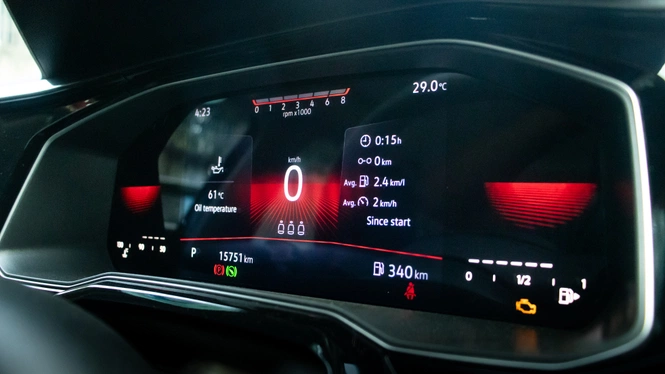
The Driver’s Display is another 8-inch screen placed right behind the steering wheel. It is a fully digital unit, again, with a red theme (For GT models only). This display only features driving information on top of the basic features you’d expect. The good thing is, it looks really premium and is easy to read even on a bright sunny day.
EXTERIOR
Pros:
- Ofcourse, the Black colour!
- 16-inch piano black alloy wheels
- Projector LED headlamps with auto on/off function
- Cornering Lamps
- One-touch open trunk with 521L of space
- Diver and co-driver side keyless entry
- Automatic wipers
Cons:
- Halogen fog lamps
- No bonnet insulation
- DRLs are burning out too soon (turning Yellowish)
The LED projector headlamps of my Virtus GT majorly set it apart from the rest of the trims. Based on the Topline trim, this blacked-out unit is exclusive to the top-of-the-line trims only. There is too much chrome on the front bumper for my liking.
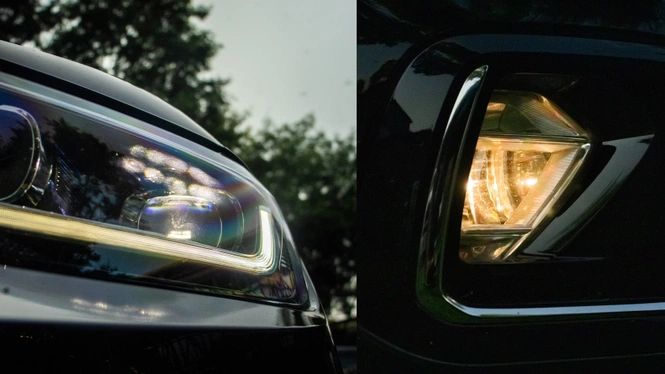
The chrome inserts curl around the fog lamps giving it a premium finish. What’s not premium about it is that these fog lamps, although with the cornering function, are basic halogen lamps with that typical yellow beam that doesn’t bode well with the car's persona.
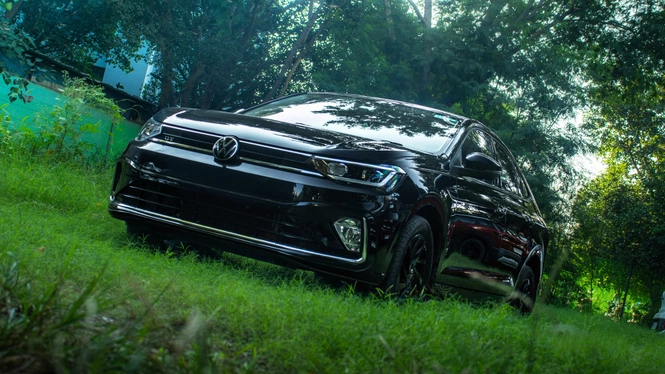
The side profile is what I love about my Virtus GT. It's completely built around a straight line and pleases every eye. The chrome only underlines the windows and the door handles. The passenger side keyless entry button also feels premium to touch as it is lined with chrome and imparts a metallic finish.
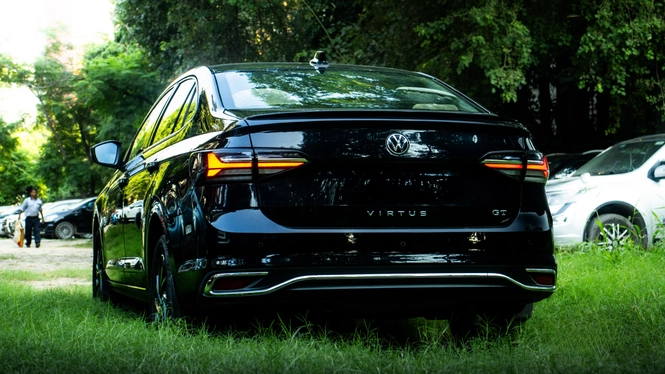
The rear of my Virtus GT reminds me of the VW Jetta, especially with its signature all-LED tail lamps. I went a step ahead and unlocked the Scandinavian DRLs in my GT. Now, the tail lamps also work as DRLs. In my opinion, the Scandinavian DRLs look the best on black cars. The Virtus badge is placed right in the centre and cannot miss your eyes.
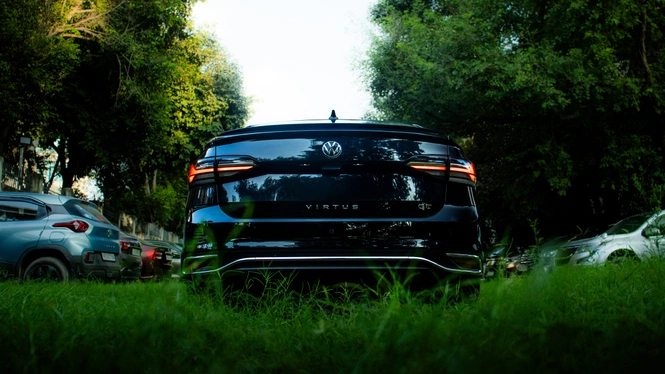
Coming to the trunk, my Virtus GT offers 521L of luggage space. This is more than just enough and I can vouch for it. When I drove to Lucknow, I had 5 peoples’ worth of luggage in it and not a single bag had to be kept out of the trunk. Although the seats can be folded down with a 60:40 split ratio, I am sure you wouldn’t need to.
VERDICT (Virtus vs Slavia)
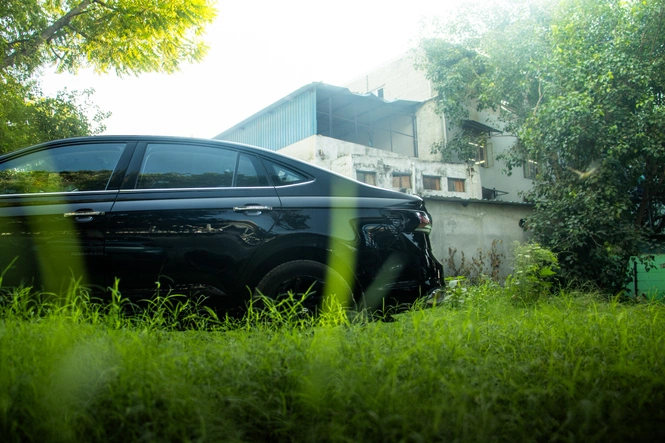
If you love to spend your time behind the steering wheel and you call yourself a speed-nut, the Virtus GT is the way to go to. Why not Slavia? Hear me out, the Slavia’s and Virtus’s core might be the same, but the suspension tuning is considerably different. The Slavia gives you a pleasant ride quality, but the Virtus offers more engagement behind the steering. The choice is yours!
Write a comment
Comments
No comments yet. Be the first to comment!
